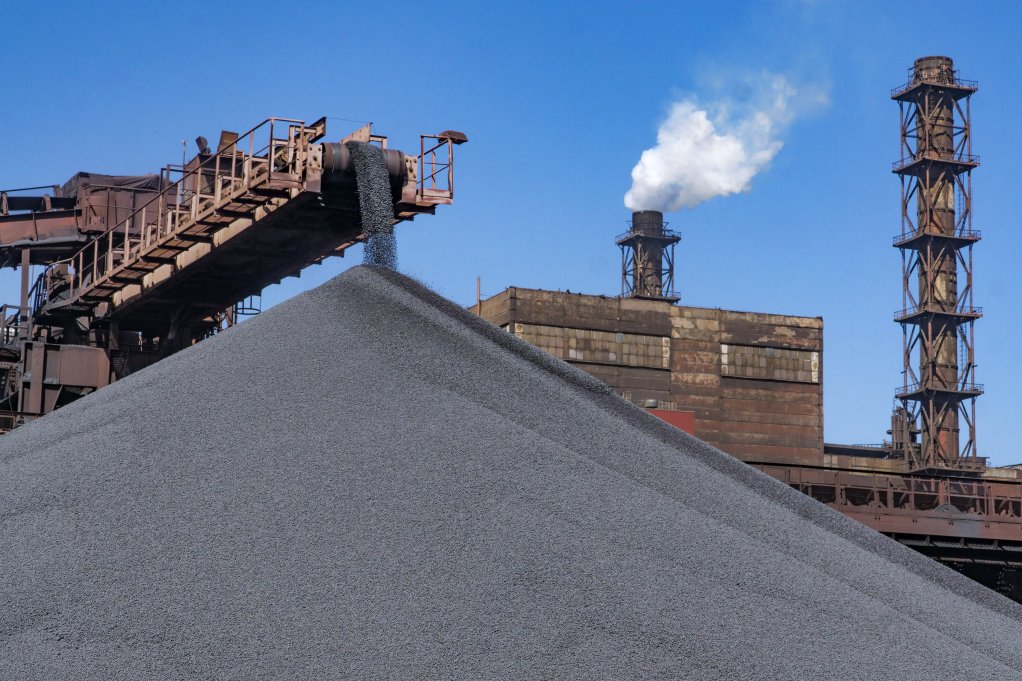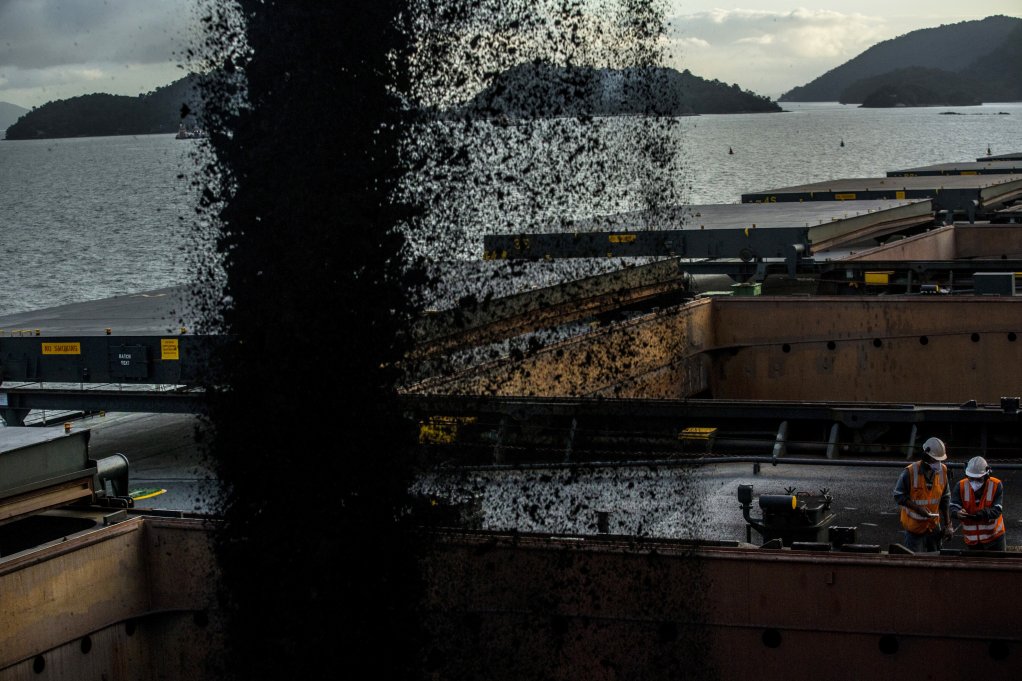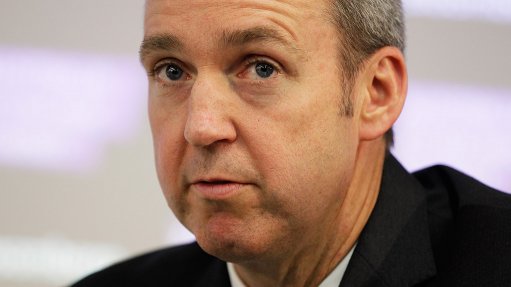Modest growth predicted in key iron-ore producing countries



CAUTIOUS OUTLOOK BMI posits that global iron-ore production will grow modestly from 3.091-billion tons in 2017 to about 3.299-billion tons by 2021
Photo by Bloomberg
KEY REGION Brazil's iron-ore production growth will remain strong in the coming years, owing to low operating costs and a solid project pipeline
Photo by Bloomberg
Global iron-ore production will grow modestly, predicts research firm BMI Research, which breaks this slow growth in output down to mine restarts and expansions in Brazil and India.
The company’s analysis posits that global iron-ore production will grow modestly from 3.091-billion tons in 2017 to about 3.229-billion tons by 2021. This represents average yearly growth of 1% during the period, which is identical to the average growth from 2012 to 2016.
BMI indicates that supply growth will be primarily driven by India, where mine restarts in the state of Goa will boost production, and Brazil, where major miner Vale is set to expand output with its new S11D Eliezer Batista mining complex. The S11D Eliezer Batista Complex mine is located in the municipality of Canaã dos Carajás, in south-east Pará.
Conversely, Australian iron-ore production is expected to slow with the exit of junior high-cost miners, as major players ramp up production. Major miners will increasingly focus on cost cutting, while a weaker Australian dollar further aids their pipeline of expansion projects. Australian iron-ore miners sell their product in US dollars, and most of their costs are in Australian dollars.
Declining production costs will keep major miners’ strategy of increasing output to reap economies of scale economically sustainable. For instance, leading global mining group Rio Tinto and multinational mining, metals and petroleum company BHP Billiton, with mines in the Pilbara region of Western Australia, will boast cash costs of $14.30/t and $15/t of iron-ore respectively, as a result of their intensive cost-cutting efforts.
BMI forecasts iron-ore production in Australia to register average yearly growth of 0.4% from 2017 to 2021, compared with 12.4% from 2012 to 2016. This mothballing of mines by the high-cost junior mining companies, as iron-ore prices remain historically weak, will be accompanied by major players sticking to their production growth targets to successfully crowd out high-cost producers.
Beyond 2017, iron-ore production will start to slow from 3.8% in 2017 to –3% in 2021 on the back of low prices. BMI expects Australia to remain the top global producer of iron-ore, with production decreasing from 897-million tons in 2017 to 881-million tons by 2021. Australia’s share of global output will average 28.6% during this period.
The Contenders
Brazil’s iron-ore production growth will remain strong in the coming years, owing to low operating costs and a solid project pipeline. BMI predicts that the country’s iron-ore production will increase from 420-million tons in 2017 to 526-million tons by 2021, averaging growth of 6.1% a year. Brazil’s top iron-ore miner, Vale, will drive production growth with the low-cost S11D project.
In December, the firm opened the $14.3-billion S11D project, consisting of ten-billion tonnes of iron-ore reserves, a processing capacity of 90-million tonnes a year, long-distance conveyor belts, 101 km of railway and an expanded port in São Luís, located in the state of Maranhão, in Brazil. Vale projects cash costs as low as $7.70/t at the mine, owing to integrated logistics and high-quality ore.
In December, Vale and BHP Billiton’s joint venture Samarco mine submitted licensing applications to restart operations at a reduced capacity in 2017. The mine has been closed since November 2015 following a deadly tailings dam burst.
Other foreign and domestic firms will continue advancing Brazilian iron-ore projects, with BMI highlighting mining major Anglo American’s $8-billion Minas Rio project, which is expected to produce 26.5-million tons a year, having reached full commercial production at the end of 2016. The mine is expected to remain operational for 28 years. However, Minas Rio will remain at high risk of sale or closure following Anglo’s restructuring plan, involving divestment in iron-ore and coal.
Further, domestic steelmakers Companhia Siderúrgica Nacional and Usiminas, which are looking to integrate upstream mining into their operations, will face project delays, owing to weak prices. In 2015, Australia-listed Centaurus Metals, which holds numerous undeveloped iron-ore deposits in Brazil, decided to refocus its business away from bulk commodities, owing to prohibitive upfront costs and a weak price environment.
Nonetheless, existing firms with existing operations will continue to ramp up production in Brazil. For instance, in September 2015, domestic steelmaker Gerdau announced a plan to significantly lift iron-ore output at the Varzea do Lopes mine, situated in Brazil’s Quadrilátero Ferrífero region, from six-million tons a year to 13-million tons a year. This strategy provides an opportunity for both fuller vertical integration in its domestic steel operations and for increasing iron- ore exports abroad, explains BMI.
Meanwhile, the firm predicts that India’s iron-ore output growth will be supported by the removal of export taxes in the Union Budget for low-grade ores and the country’s Mines and Minerals (Development and Regulation) Act (MMDRA), which will streamline licensing and reopen closed mines.
Although the MMDRA will support ore output growth, the royalties included in the Act will limit the sector’s overall growth potential. As part of India’s 2016 Union Budget, export duties for iron-ore lumps and fines below 58% iron content were reduced to nil from 30% and 10% respectively, which will significantly aid Goan shipments to recover, with miners remaining burdened by local levies and low prices.
The royalties reduction was aimed at boosting shipments from the western state of Goa, where the Supreme Court in April lifted a 2012 iron-ore mining ban. BMI forecasts India’s iron-ore output to grow from 185-million tons in 2017 to 221-million tons in 2021. This represents an average annual growth of 6.6% from 2017 to 2021, compared with the average contraction of 5% year-on-year over 2012 to 2016 following mining bans in the three largest iron-ore producing states of Goa, Odisha and Karnataka, which have since been lifted.
Comments
Press Office
Announcements
What's On
Subscribe to improve your user experience...
Option 1 (equivalent of R125 a month):
Receive a weekly copy of Creamer Media's Engineering News & Mining Weekly magazine
(print copy for those in South Africa and e-magazine for those outside of South Africa)
Receive daily email newsletters
Access to full search results
Access archive of magazine back copies
Access to Projects in Progress
Access to ONE Research Report of your choice in PDF format
Option 2 (equivalent of R375 a month):
All benefits from Option 1
PLUS
Access to Creamer Media's Research Channel Africa for ALL Research Reports, in PDF format, on various industrial and mining sectors
including Electricity; Water; Energy Transition; Hydrogen; Roads, Rail and Ports; Coal; Gold; Platinum; Battery Metals; etc.
Already a subscriber?
Forgotten your password?
Receive weekly copy of Creamer Media's Engineering News & Mining Weekly magazine (print copy for those in South Africa and e-magazine for those outside of South Africa)
➕
Recieve daily email newsletters
➕
Access to full search results
➕
Access archive of magazine back copies
➕
Access to Projects in Progress
➕
Access to ONE Research Report of your choice in PDF format
RESEARCH CHANNEL AFRICA
R4500 (equivalent of R375 a month)
SUBSCRIBEAll benefits from Option 1
➕
Access to Creamer Media's Research Channel Africa for ALL Research Reports on various industrial and mining sectors, in PDF format, including on:
Electricity
➕
Water
➕
Energy Transition
➕
Hydrogen
➕
Roads, Rail and Ports
➕
Coal
➕
Gold
➕
Platinum
➕
Battery Metals
➕
etc.
Receive all benefits from Option 1 or Option 2 delivered to numerous people at your company
➕
Multiple User names and Passwords for simultaneous log-ins
➕
Intranet integration access to all in your organisation




















